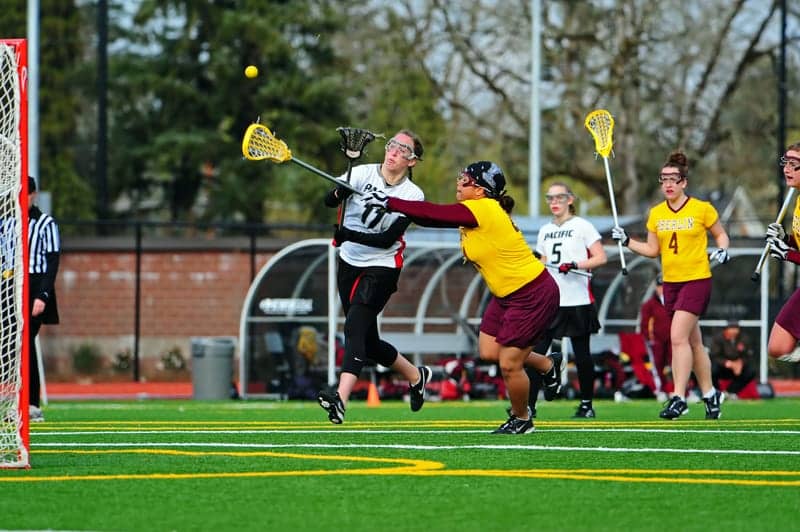High school girls’ lacrosse players who may, but are not required to, wear flexible headgear are at a higher risk of getting a concussion from a stick or ball impact than boys’ lacrosse players, who are required to wear a hard shell helmet with a full face mask, according to research published in Injury Epidemiology.
In the study, faculty at the Colorado School of Public Health at the University of Colorado Anschutz Medical Campus, and the University of Colorado Denver looked at whether female lacrosse players are at a greater risk for concussions than male lacrosse players due to differences in helmet regulations.
“As youth sports begin to restart across the country, the results of our study provide a reminder to parents about the risk of concussion for girls in lacrosse compared to their male counterparts,” Dawn Comstock, PhD, professor of epidemiology at the Colorado School of Public Health, and lead author of the paper, says in a media release.
Boys’ lacrosse is a full contact sport that allows body and stick checking, which mandates hard shell helmets with full face masks. Girls’ lacrosse, which prohibits body checking and whose sphere rule is supposed to prevent stick checking to the head, allows optional flexible headgear with or without integrated eye protection.
“The disproportionate guidelines around protective equipment for different genders are outdated. Our study’s results indicate it shouldn’t be a debate whether the required boys’ lacrosse hard shell helmets should also be mandated in girls’ lacrosse,” says Sarah K. Fields, JD, PhD, professor of communication at the University of Colorado Denver and study co-author.
Related Content:
Did Protective Headgear Encourage Girls to Play Lacrosse More Aggressively?
Baseball, Soccer, and Lacrosse Top the List of ACL Injury-Causing Sports Among High School Females
Gender Could Make a Difference in Sports Injuries and Treatment Outcomes
In this study, researchers used lacrosse concussion data from the National High School Sports-Related Injury Surveillance Study to determine if girls’ lacrosse players were at increased risk of concussion from stick or ball contact due to differences in helmet regulations by calculating the attributable risk and attributable risk percent (AR%) for concussion resulting from ball or stick impacts.
The researchers looked at gender comparison by injury mechanism. The key findings, according to the release include:
- In girls’ lacrosse, stick or ball contact was the most common mechanism of concussion, accounting for 72.7% of all concussions, while athlete-athlete contact accounted for 19.8%.
- In boys’ lacrosse, stick or ball contact accounted for 23.5% of all concussions while athlete to athlete contact accounted for 66.4%.
- The rate of concussions from stick or ball contact was significantly higher in girls than boys, with girls being 2.6 times as likely to sustain a concussion from stick or ball contact.
- An estimated 45% of all girls’ lacrosse concussions could have been prevented if girls’ wore the helmet mandated in boys’ lacrosse.
The study found no evidence to indicate the hard shell helmet with full face mask currently mandated in boys’ lacrosse would not provide similar protection from stick and ball strikes in girls’ lacrosse.
“Bottom line, girls playing lacrosse are sustaining concussions that could have been prevented if gender bias did not prohibit them from wearing the very helmet required for boys playing lacrosse,” Comstock adds.
[Source(s): University of Colorado Anschutz Medical Campus, EurekAlert]





